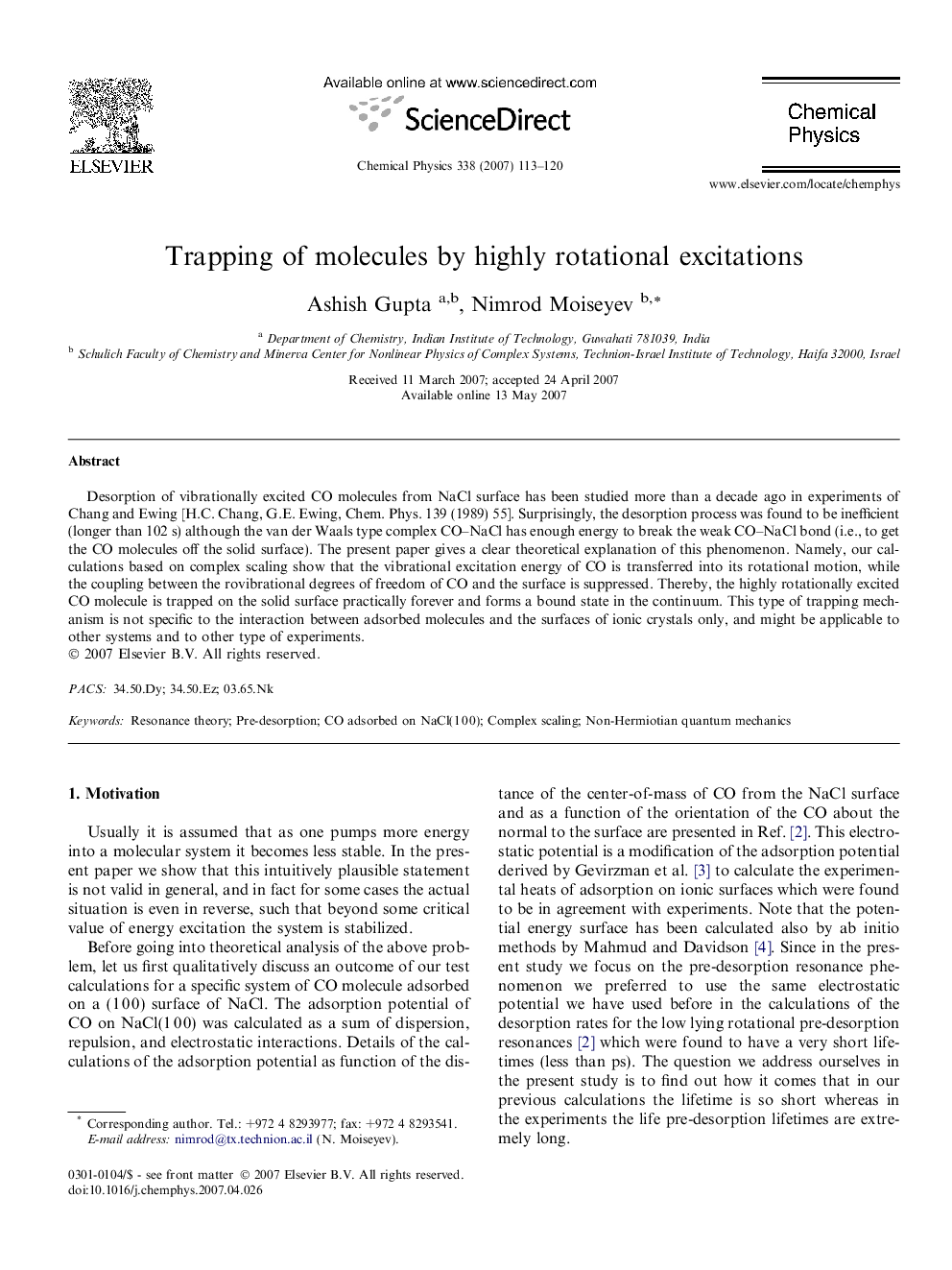| Article ID | Journal | Published Year | Pages | File Type |
|---|---|---|---|---|
| 5376623 | Chemical Physics | 2007 | 8 Pages |
Abstract
Desorption of vibrationally excited CO molecules from NaCl surface has been studied more than a decade ago in experiments of Chang and Ewing [H.C. Chang, G.E. Ewing, Chem. Phys. 139 (1989) 55]. Surprisingly, the desorption process was found to be inefficient (longer than 102Â s) although the van der Waals type complex CO-NaCl has enough energy to break the weak CO-NaCl bond (i.e., to get the CO molecules off the solid surface). The present paper gives a clear theoretical explanation of this phenomenon. Namely, our calculations based on complex scaling show that the vibrational excitation energy of CO is transferred into its rotational motion, while the coupling between the rovibrational degrees of freedom of CO and the surface is suppressed. Thereby, the highly rotationally excited CO molecule is trapped on the solid surface practically forever and forms a bound state in the continuum. This type of trapping mechanism is not specific to the interaction between adsorbed molecules and the surfaces of ionic crystals only, and might be applicable to other systems and to other type of experiments.
Related Topics
Physical Sciences and Engineering
Chemistry
Physical and Theoretical Chemistry
Authors
Ashish Gupta, Nimrod Moiseyev,
